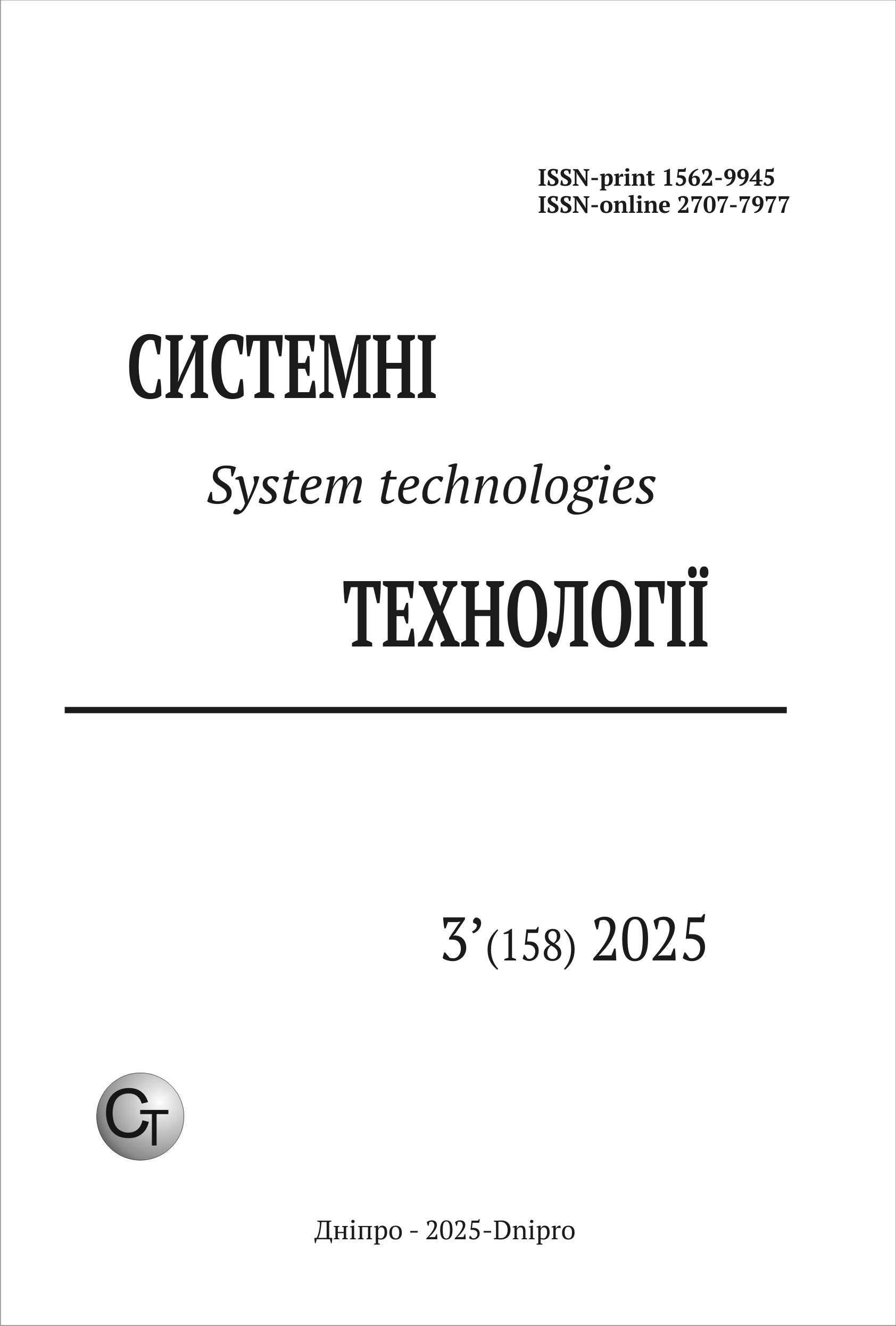Using time series and lstm neural networks for identification of hive states
DOI:
https://doi.org/10.34185/1562-9945-3-158-2025-13Keywords:
neural networks, LSTM, time series, tensorflow, weight monitoring, bee swarming, bees, bee hive monitoringAbstract
Bees are an essential part of our ecosystem and economy. Given the threats facing bee populations, developing effective methods to monitor and conserve them is critically impor-tant. Traditional methods of monitoring bee colonies, such as visual inspections, hive weight monitoring, and acoustic analysis, have their limitations. Visual inspections are subjective, time-consuming, and can disrupt colony life. The aim of this study is to develop and evaluate methods employing time-series analysis and LSTM neural network architectures for the iden-tification of various beehive states. The research focuses specifically on utilizing time-series data pertaining to hive weight and temperature, supplemented by temporal information (hour and month), to train models capable of distinguishing these different conditions. Data for training includes relative hive weight/temperature and time/month details, sourced from dataset which contained crucial state/event labels. The preparation process in-volves handling data instability and gaps using metadata, aggregating the data (into 15-min or 4-hour intervals), applying interpolation and smoothing, performing feature engineering (like calculating relative weight change), segmenting data into time windows (6 hours for point states, 96 hours for global states), balancing the classes, and splitting the data into training and testing sets. Two LSTM models were developed. The first model identified point states (swarming, feeding, honey removal) using features like weight change, month, and hour, achieving 96% overall accuracy. The second model classified global states (normal function, colony death, spring warm-up, honey collection) using features such as weight change, temperature ratio, and month, reaching 92% overall accuracy. These results confirm the effectiveness of utilizing LSTMs combined with time-series sensor data for the reliable identification of diverse beehive states.
References
Khalifa, S. A. M., Elshafiey, E. H., Shetaia, A. A., El-Wahed, A. A. A., Algethami, A. F., Musharraf, S. G., AlAjmi, M. F., Zhao, C., Masry, S. H. D., Abdel-Daim, M. M., Halabi, M. F., Kai, G., Al Naggar, Y., Bishr, M., Diab, M. A. M., & El-Seedi, H. R. (2021). Overview of Bee Pollination and Its Economic Value for Crop Production. Insects, 12(8), 688. https://doi.org/10.3390/insects12080688
The impact of ecosystem services on the intensification of agricultural production. (2021). Economic Journal of Lesya Ukrainka Volyn National University, 1(25), 37-51. https://doi.org/10.29038/2786-4618-2021-01-37-51
Warner, S., Pokhrel, L. R., Akula, S. M., Ubah, C. S., Richards, S. L., Jensen, H., & Kear-ney, G. D. (2024). A scoping review on the effects of Varroa mite (Varroa destructor) on global honey bee decline. Science of The Total Environment, 906, 167492. https://doi.org/10.1016/j.scitotenv.2023.167492.
Lima, M. A. P., Cutler, G. C., Mazzeo, G., & Hrncir, M. (2022). Editorial: The decline of wild bees: Causes and consequences. Frontiers in Ecology and Evolution, 10, 1027169. https://doi.org/10.3389/fevo.2022.1027169
Rigakis, I., Potamitis, I., Tatlas, N.-A., Psirofonia, G., Tzagaraki, E., & Alissandrakis, E. (2023). A Low-Cost, Low-Power, Multisensory Device and Multivariable Time Series Pre-diction for Beehive Health Monitoring. Sensors, 23(3), Article 3. https://doi.org/10.3390/s23031407
Kviesis, A., & Zacepins, A. (2016). Application of neural networks for honey bee colony state identification. 2016 17th International Carpathian Control Conference (ICCC), 413–417. https://doi.org/10.1109/CarpathianCC.2016.7501133
Sledevic, T. (2018). The Application of Convolutional Neural Network for Pollen Bearing Bee Classification. Sledevic, T. (2018). The Application of Convolutional Neural Network for Pollen Bearing Bee Classification. 2018 IEEE 6th Workshop on Advances in Information, Electronic and Electrical Engineering (AIEEE), 1–4.
https://doi.org/10.1109/AIEEE.2018.8592464
Braga, D., Madureira, A., Scotti, F., Piuri, V., & Abraham, A. (2021). An Intelligent Moni-toring System for Assessing Bee Hive Health. IEEE Access, 9, 89009–89019. https://doi.org/10.1109/ACCESS.2021.3089538
Kwon, K.-H., Kim, J.-S., & Lee, H.-B. (2019). Forecast of Bee Swarming using Data Fu-sion and LSTM. Journal of Digital Contents Society, 20(1), Article 1. https://doi.org/10.9728/dcs.2019.20.1.1
Ruvinga, S., Hunter, G. J. A., Duran, O., & Nebel, J.-C. (2021). Use of LSTM Networks to Identify “Queenlessness” in Honeybee Hives from Audio Signals. 2021 17th International Conference on Intelligent Environments (IE), 1–4. https://doi.org/10.1109/IE51775.2021.9486575
Khairul Anuar, N. H., Md Yunus, M. A., Baharudin, M. A., Ibrahim, S., Sahlan, S., & Faramarzi, M. (2023). An assessment of stingless beehive climate impact using multivariate recurrent neural networks. International Journal of Electrical and Computer Engineering (IJECE), 13(2), 2030. https://doi.org/10.11591/ijece.v13i2.pp2030-2039
Senger, D., Gruber, C., Kluss, T., & Johannsen, C. (2024). Weight, temperature and hu-midity sensor data of honey bee colonies in Germany, 2019–2022. Data in Brief, 52, 110015. https://doi.org/10.1016/j.dib.2023.110015
Downloads
Published
Issue
Section
License
Copyright (c) 2025 System technologies

This work is licensed under a Creative Commons Attribution 4.0 International License.















